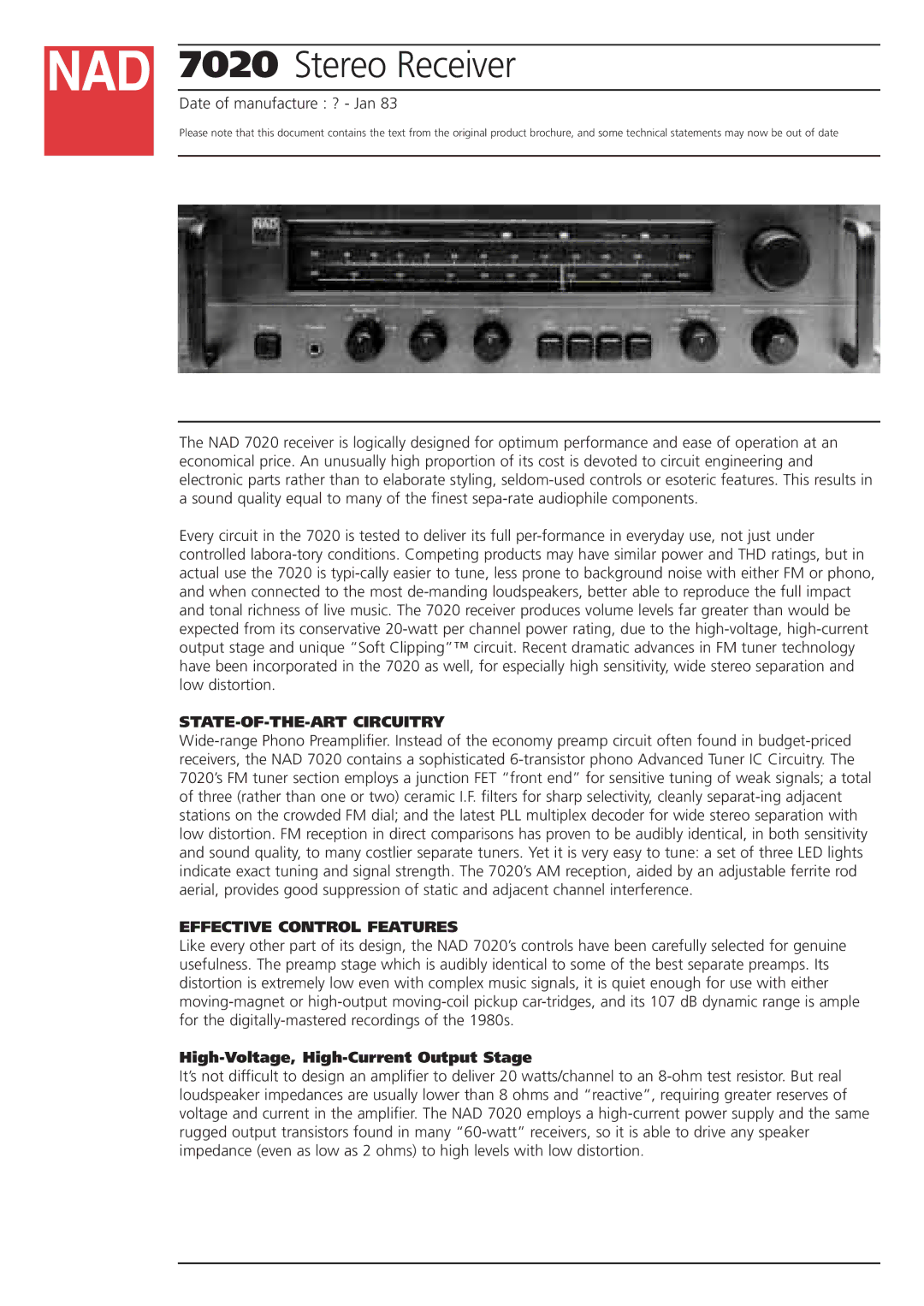7020 specifications
The NAD 7020 is a classic integrated amplifier known for its remarkable sound quality and functionality that has stood the test of time. Launched in the late 1970s, it quickly became a favorite among audio enthusiasts due to its ability to deliver high-quality sound without breaking the bank.One of the standout features of the NAD 7020 is its robust amplification capabilities. With a power output of around 20 watts per channel into 8 ohms, it may seem modest by today's standards; however, it utilizes NAD's proprietary PowerDrive technology. This innovation allows the amplifier to deliver high current on demand, enabling it to drive a wide range of speakers, including those that require more power for optimal performance.
The NAD 7020 is characterized by its minimalist design and user-friendly interface. It comes equipped with rotary knobs for volume, bass, and treble, allowing listeners to easily adjust settings to their preference. The build quality is solid, featuring a sturdy chassis that minimizes vibrations and enhances overall audio fidelity.
Another notable aspect of the 7020 is its versatility in connectivity options. It features multiple inputs, making it compatible with various sources like turntables, CD players, and tape decks. The inclusion of a high-quality phono stage for moving magnet cartridges ensures that vinyl lovers can enjoy their records with clarity and depth.
In terms of technologies, the NAD 7020 employs a simple yet effective signal path that prioritizes sound quality. It avoids unnecessary complexity, which can introduce distortion and noise. The amplifier's discrete output stages further contribute to its clean, dynamic sound, ensuring an engaging listening experience.
Audio enthusiasts appreciate the NAD 7020 for its warm and rich tonal quality, which excels in the midrange frequencies. Vocals and instruments are rendered with a naturalness that enhances the overall enjoyment of music. Its subtle yet defined bass response adds depth without overpowering the highs, achieving a balanced sound profile.
In conclusion, the NAD 7020 remains a cherished piece of audio equipment. Its combination of solid amplification, versatile connectivity, and excellent sound quality make it a timeless choice for those seeking an integrated amplifier that truly delivers. Whether used with vinyl records or digital sources, this classic model continues to impress audiophiles around the world, solidifying its place in the history of high-fidelity audio.

